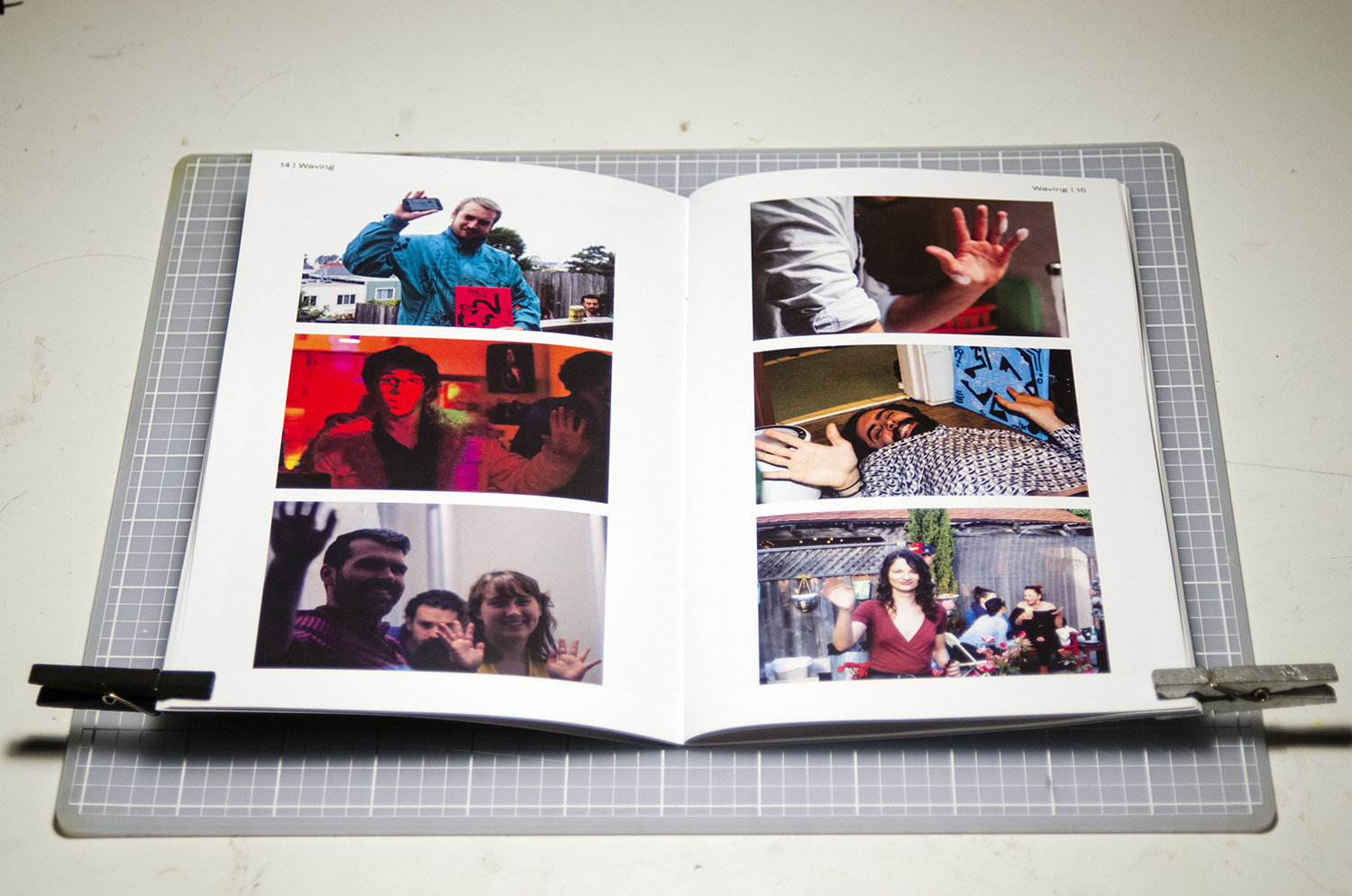Waving 2017-2018
2018 | Design ➝ Branding
5.5x8.5in 56page saddle-bound booklet
Edition of 20 in English. 5 in French.
The History of Waving
The waving of the hand is a nonverbal gesture that has an unclear origin but is said to have dated back to as far as the 18th century however, it was neither called waving, nor was it used as saying “hello”, or “goodbye.”
The original gesture of waving was saluting. In the 18th century, knights removed the guard of their helmets to show their identity, following with a salute to show they come in peace; saluting is also used to show others that they are not armed with weapons and do not pose a threat. The action of saluting wasn’t formalised until the 1780s by the European armies, and since then became a common way of properly addressing one another in a military setting.
Waving “hello” or “goodbye” to the deaf requires a different protocol and has an alternate meaning than the standard, one action waving gesture that means both “hello” or “goodbye.” For an ASL user, or a deaf individual, saying “goodbye” is done by repeatedly opening and closing the right hand, while it faces the receiver of the gesture. This method is used to say “goodbye” to a group of people; saying “goodbye” to an individual is done with a different method. Saying “hello” is done by the traditional waving of the right hand. This method is used to say “hello” to a group of people, likewise with implying “goodbye”, there is a different method to say “hello” to an individual.
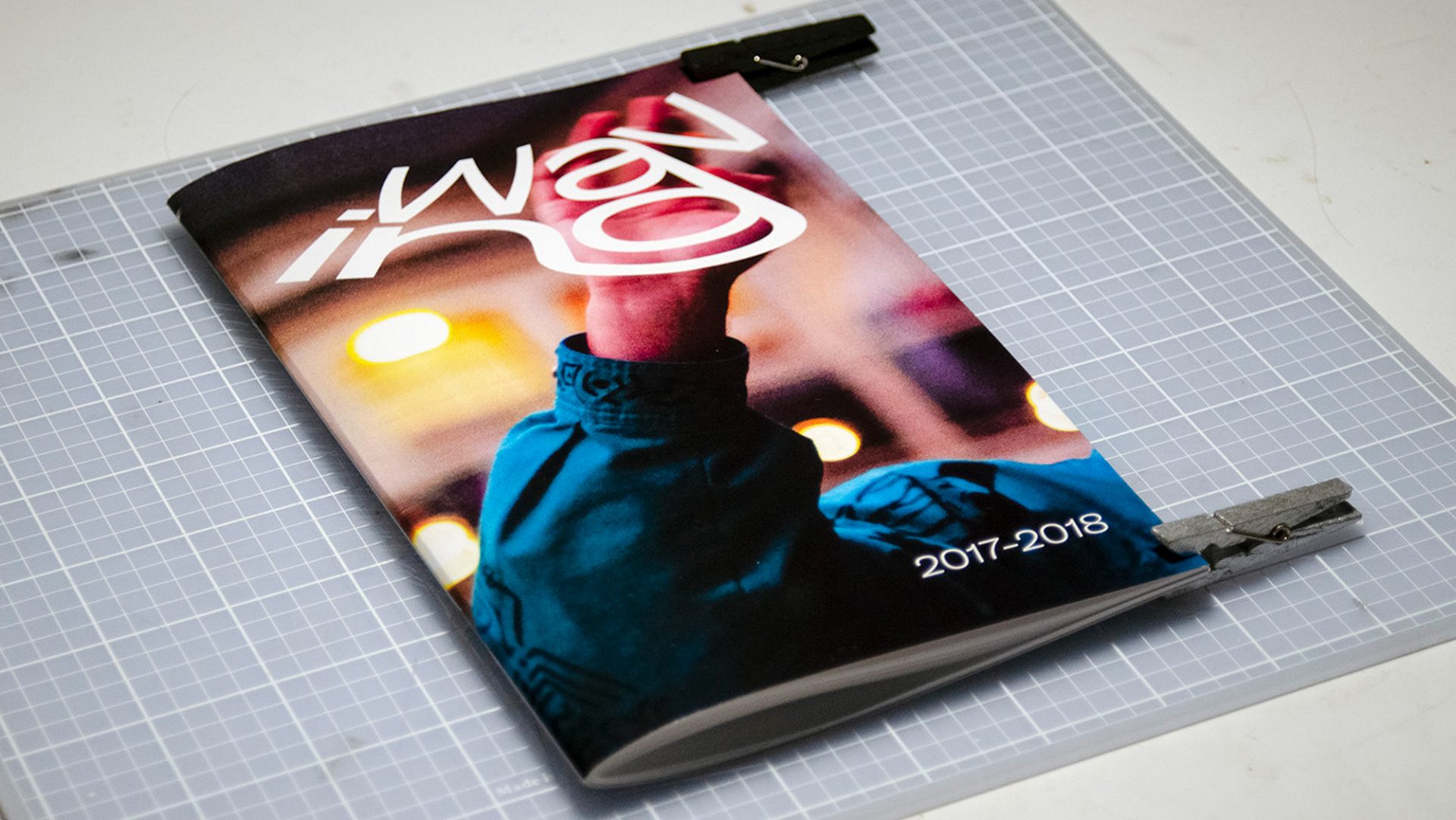
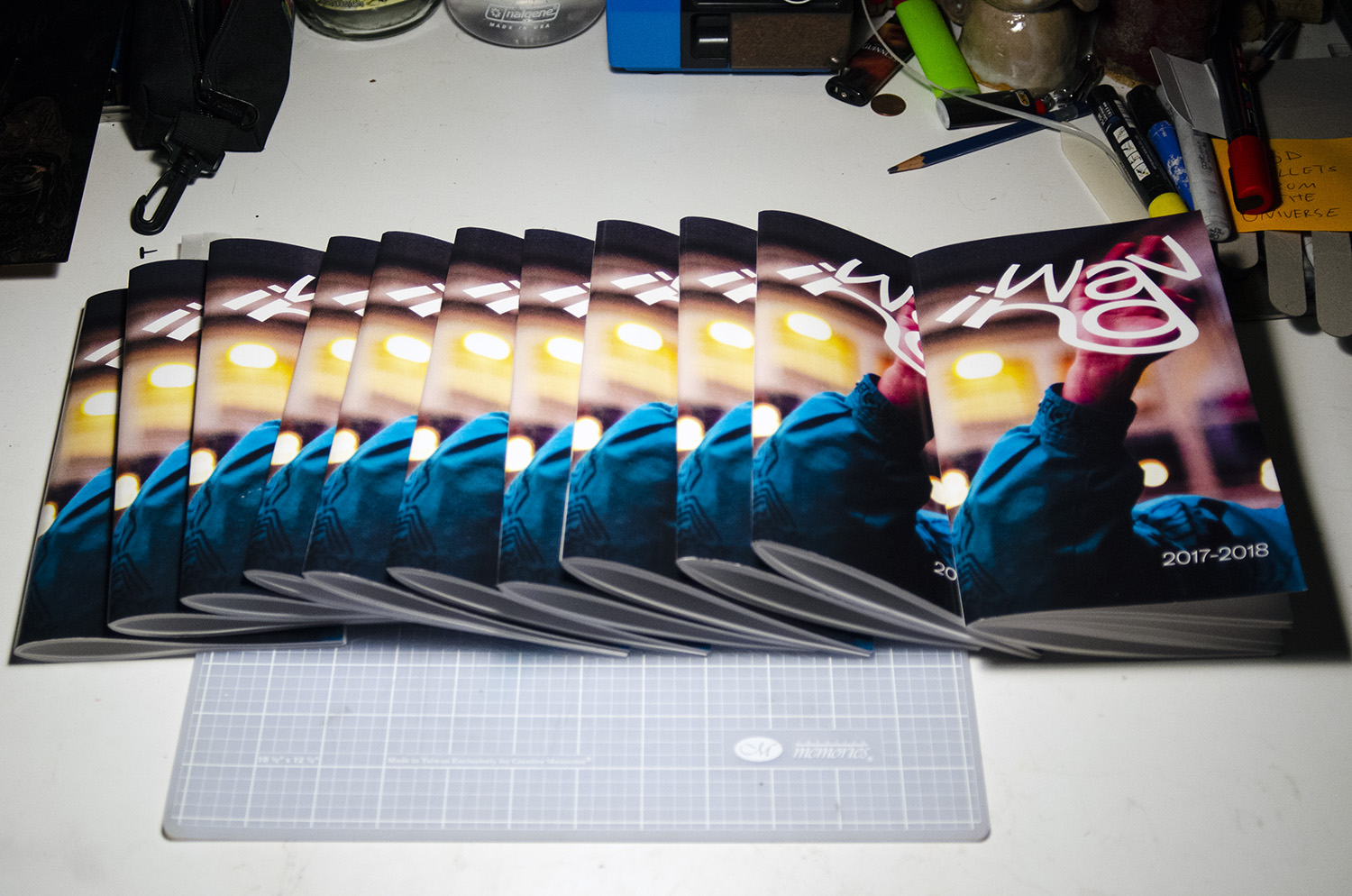
Components
The waving of the hand has multiple variables and styles of performing the gesture. The common waving of the hand to mean “hello” or “goodbye” is done by moving the hand side to side, however there are more than one form of waving; each form having its own meaning.
Variables
Waving has four variables which include:
- the open palm (is the palm curved or straight),
- the angle of the wave (big waves or short waves),
- the elevation of the hand (above the head or low),
- and the movement pattern of the wave (sideways rotation, up and down motion, side to side motion)
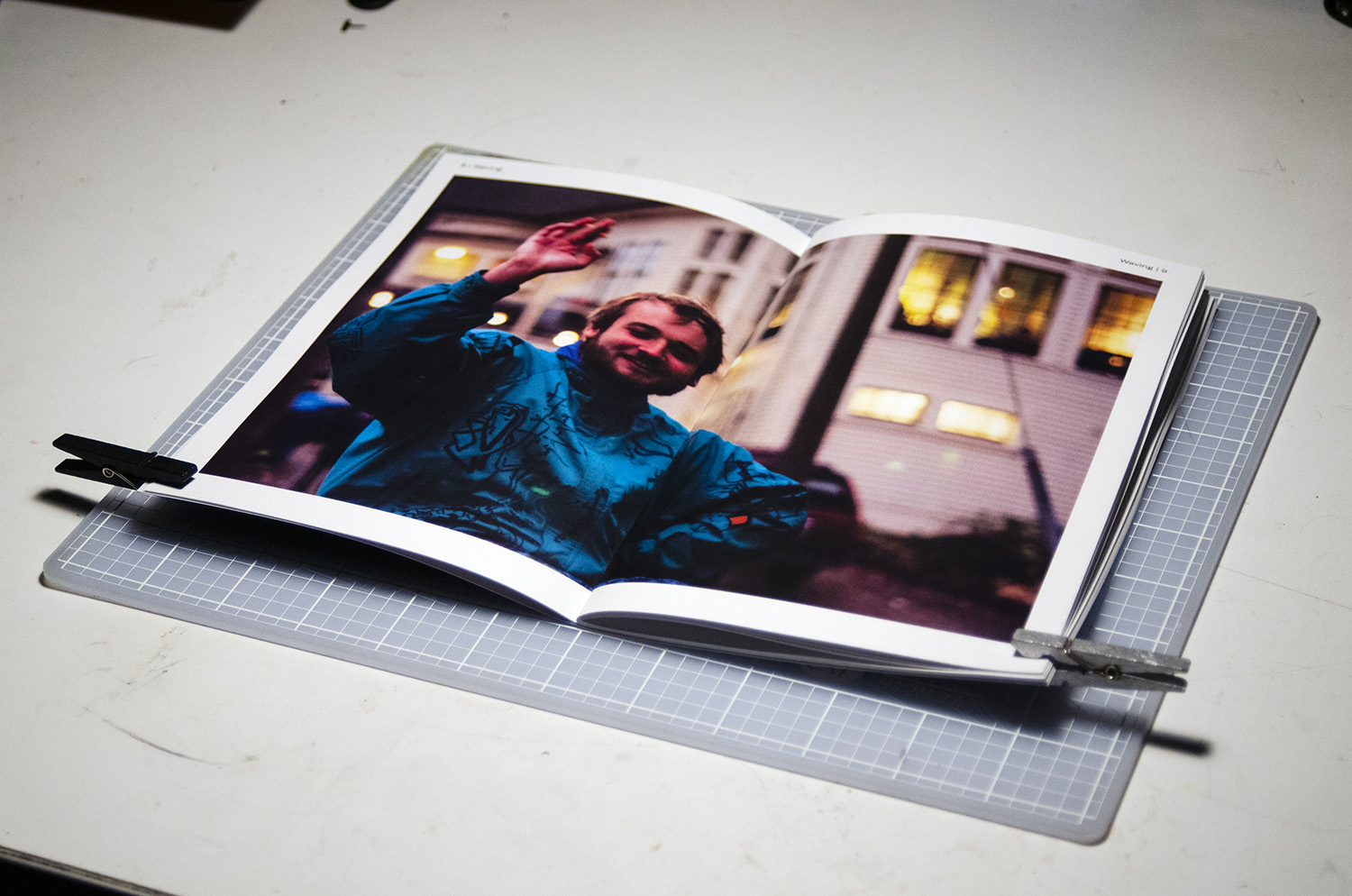
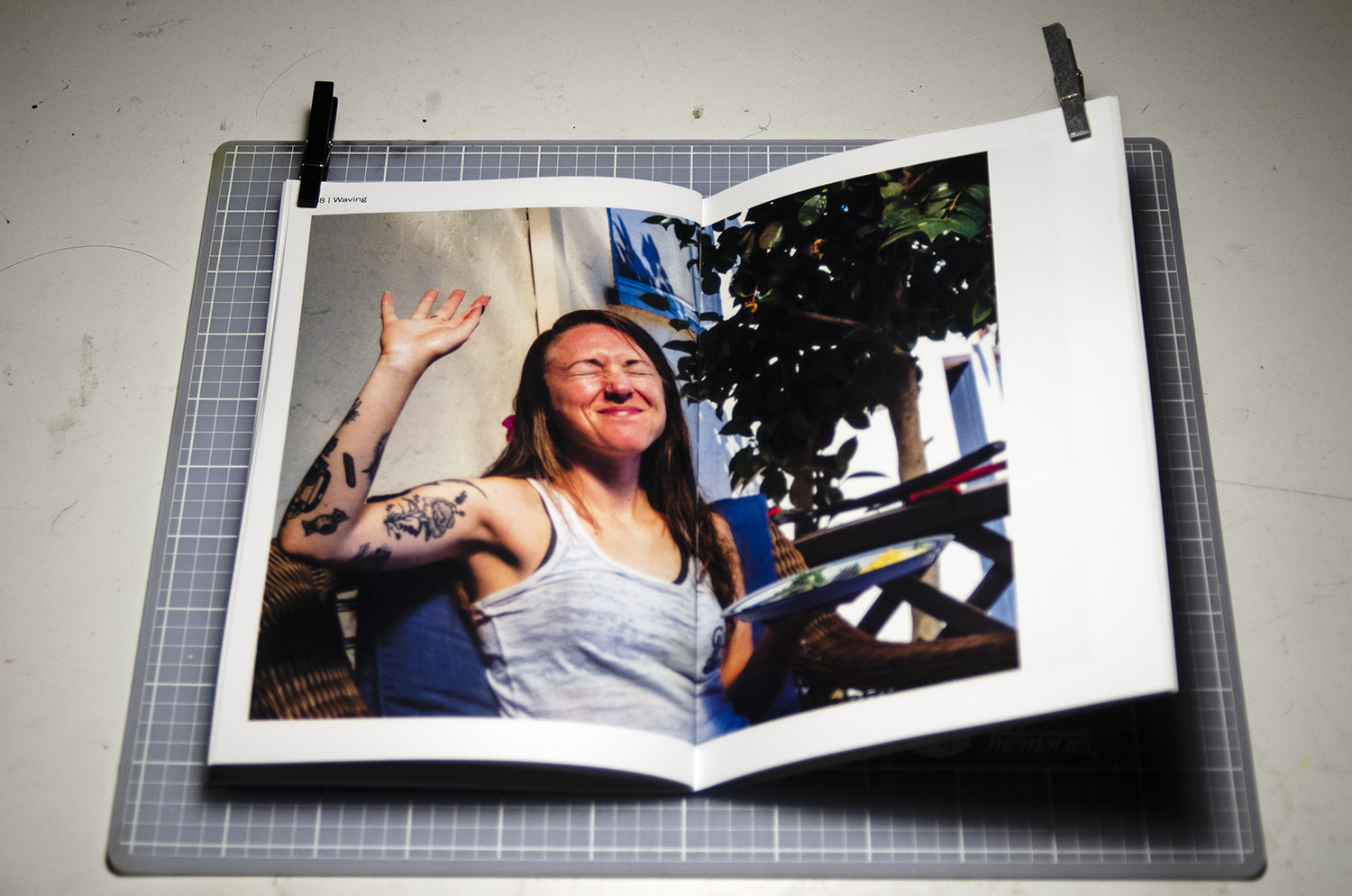
Types of Wave
There are different ways to wave the hand, some include the standard side-to-side wave, palm wide wave, wiggly wave (finger wiggle wave), “flirtatious” wave, open-and-close finger wave, arm wave, and the “Miss America” wave.
People wave by raising their hand and moving it from side to side. Another common wave is to raise one’s hand and repeatedly moving the fingers downward toward the palm.
A variant known as the wiggly wave consists of holding the hand near shoulder level and wiggling the fingers randomly. This can be used to appear cute or flirtatious, to the target of the wave. The gesture can be used to attract attention at a distance or close up. Most commonly, though, the gesture means quite simply “hello” or “goodbye”.
The royal wave, also known as a regal wave, pageant wave, parade wave, or Miss America wave, is a similar but distinct kind of hand waving gesture in which a person executes something alternatively described as either a ‘plastic grin’ with ‘fingers cupped’ and ‘forearm swaying side-to-side’ or a “vertical hand with a slight twist from the wrist”.
There are many ways of waving goodbye: Americans face the palm outward and move the hand side to side, Italians face the palm inward and move the fingers facing the other person, French and Germans face the hand horizontal and move the fingers toward the person leaving.
Of course, the best wave, is a variation on the common wave, where an individual holds his arm outward to form a ninety degree angle with his elbow and forearm, and then move the arm back and forth horizontally, keeping the wrist locked, while maintaining eye contact with the recipient.
